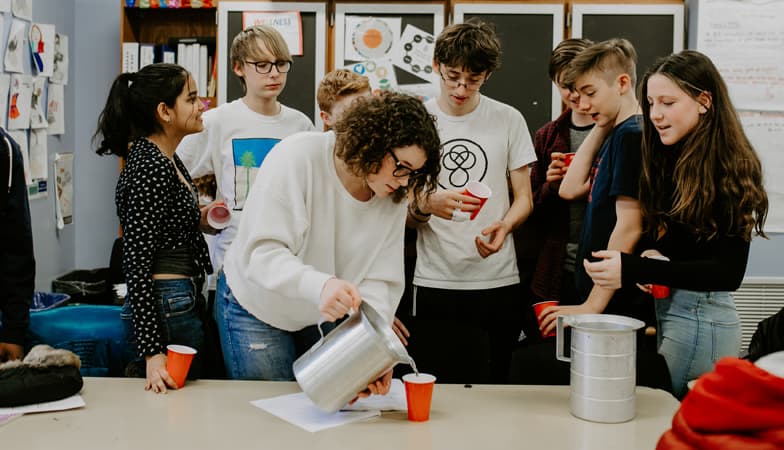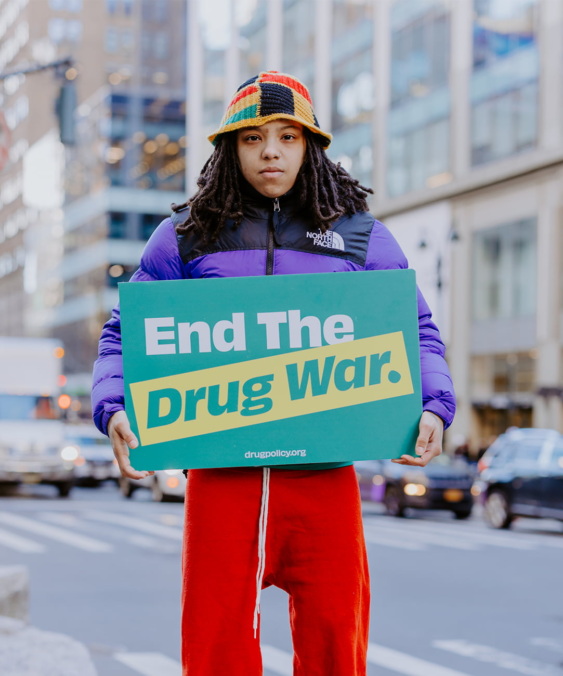
Students choose between two pitchers of identical-looking beverages to learn how it's impossible to tell what's in a drug just by looking at it, and why a harm reduction practice called drug checking can increase safety.

Students choose between two pitchers of identical-looking beverages to learn how it's impossible to tell what's in a drug just by looking at it, and why a harm reduction practice called drug checking can increase safety.
In order to be safer, young people need accurate, honest, compassionate drug education. This is why the Drug Policy Alliance (DPA) developed and distributed Safety First: Real Drug Education for Teens. It is the nation’s first harm reduction-based drug education curriculum for high school students.
The curriculum emerged from DPA’s long-running Safety First program aimed at providing resources for parents. DPA managed the Safety First curriculum from its creation in 2016 until March 2023 when we transferred it to Stanford Medicine’s REACH Lab. Stanford Medicine’s REACH Lab has deep expertise in developing curricula for young people and will further develop, expand, and evaluate Safety First.
You can find the Safety First curriculum and all its supporting materials on Stanford Medicine’s REACH Lab Safety First page.
Young people need factual information on drugs in order to be safer. Yet, most schools in the United States provide drug education programs that are based in abstinence-only logic despite its weaknesses. Programs like D.A.R.E. don’t give students the tools they need to make safe decisions or to get help if problems with alcohol and other drugs do occur.
Furthermore, abstinence-only education too often has the effect of making teenagers cynical about any drug information coming from adults.
DPA developed Safety First according to the following principles:
Safety First was developed with young people in mind. After conducting research, DPA completed its first version in 2017. It consisted of 15 lessons that were meant to be delivered by a health teacher for 9th or 10th graders in 45 to 50 minute class periods. The curriculum content was aligned with National Health Education Standards as well as Common Core State Standards.
From 2018-2019, DPA piloted and evaluated Safety First with New York City and San Francisco high schools. We then launched Safety First publicly, making it broadly available as a free resource. In 2020, we created a Distance Learning version in response to COVID-19 restrictions.
At every turn, we solicited feedback from students and teachers to improve our curriculum. In 2021, we released the final version. This was the version we transferred to Stanford Medicine’s REACH Lab.
Safety First was independently evaluated by Dr. Nina Rose Fischer, Associate Professor at City University of New York (CUNY) John Jay College of Criminal Justice in Interdisciplinary Studies, both in 2018 and 2019.
Highlights from the evaluation include:
You can read a published paper reviewing the evaluation results in the Substance Abuse Treatment, Prevention and Policy journal.
